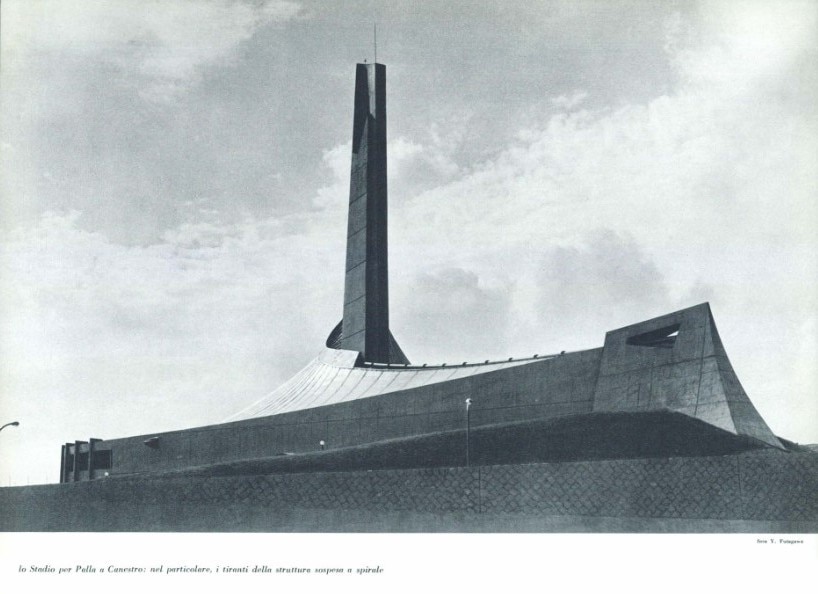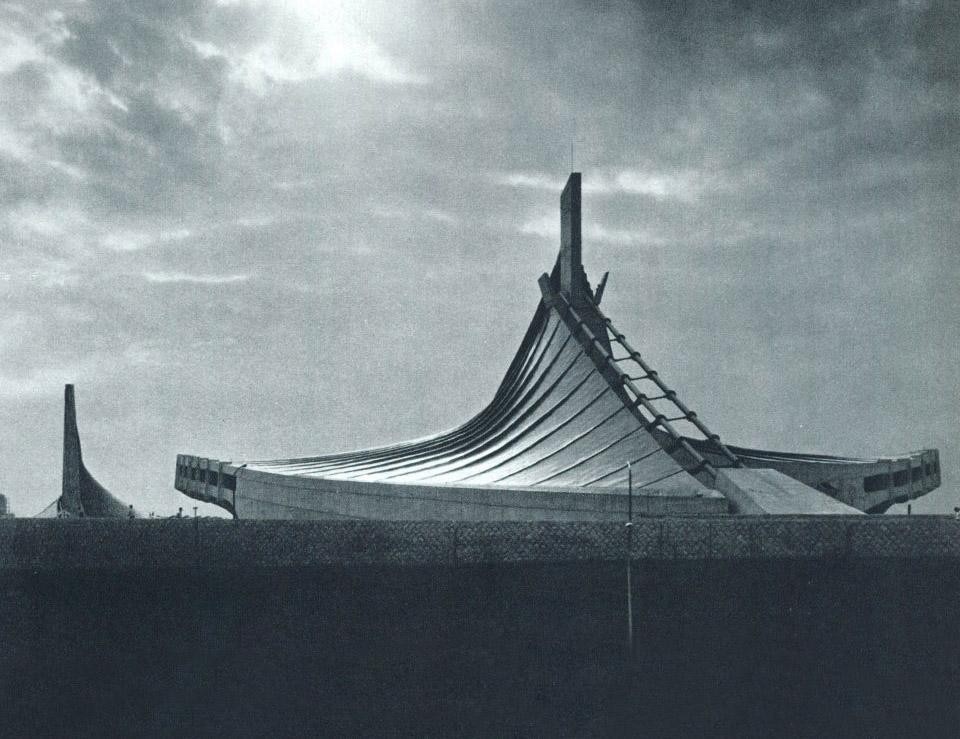Kenzo Tange represented a new Japan since the very aftermath of World War II, a country that was opening to a global dimension and looking westwards, starting a dialogue between the depths of local culture and the languages of Modern that were taking hold in architecture worldwide. As early as 1952, Gio Ponti had published Tange’s Peace Hall in Hiroshima on Domus, recognising in the project the germ of a long exchange; over the decades his works would appear in Italy, as well as in Europe and Asia, with Japan always in the foreground. In 1964 Tokyo hosted the Olympic Games and Tange developed a master plan that included one of his masterpieces, the arena with swimming pools and basketball courts, still in use today as the Yoyogi National Gymnasium. A commentary by the Japanese maestro, originally conceived for the magazine Kenchiku Bunka, was also published by Domus in March 1965, issue 424, to explain the genesis and character of works that were ready to represent an era.
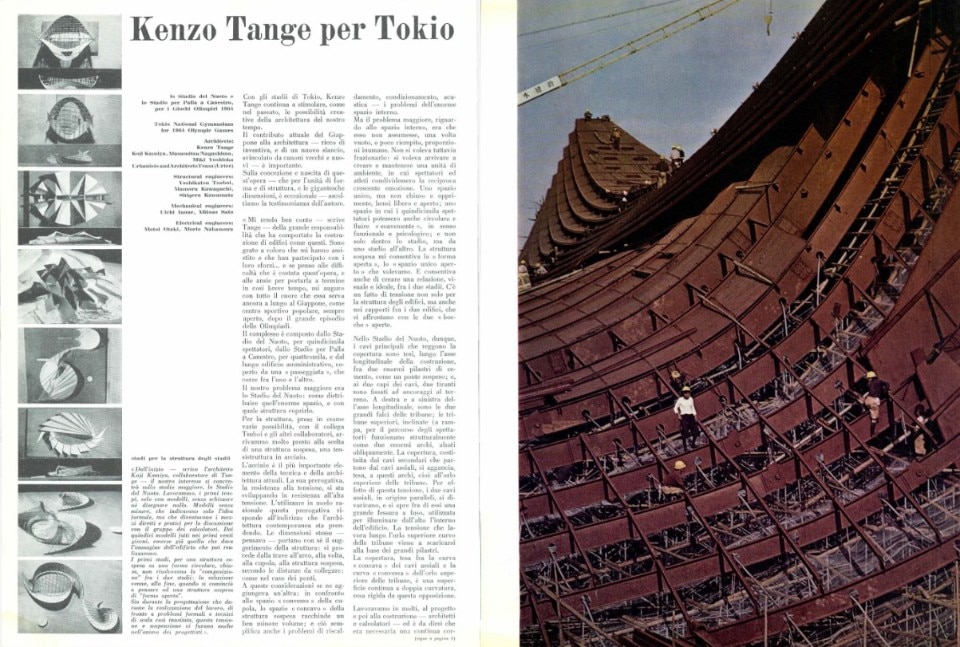
Kenzo Tange for Tokyo
As in the past, with the Tokyo stadiums Kenzo Tange continues to stimulate the creative possibilities of the architecture of our times. Japan's current contribution to architecture—full of inventiveness and new momentum, free from old and new canons—is an important one. We will listen to the author regarding the conception and birth of this work which is exceptional both for the unity of its form and structure as well as for its enormous size.
"I am well aware," Tange writes, "of the great responsibility that has led to the construction of buildings like these. I am grateful to those who have helped and participated with their efforts... and if I think of the difficulties and the anxiety involved in completing the work in such a short time, I hope with all my heart that it can serve Japan much longer as a popular sports center—always open—after the great episode of the Olympics. The complex is made up of the Swimming Stadium for fifteen thousand spectators, the Basketball Stadium for four thousand, and the long administrative building covered by a 'walkway' between them.
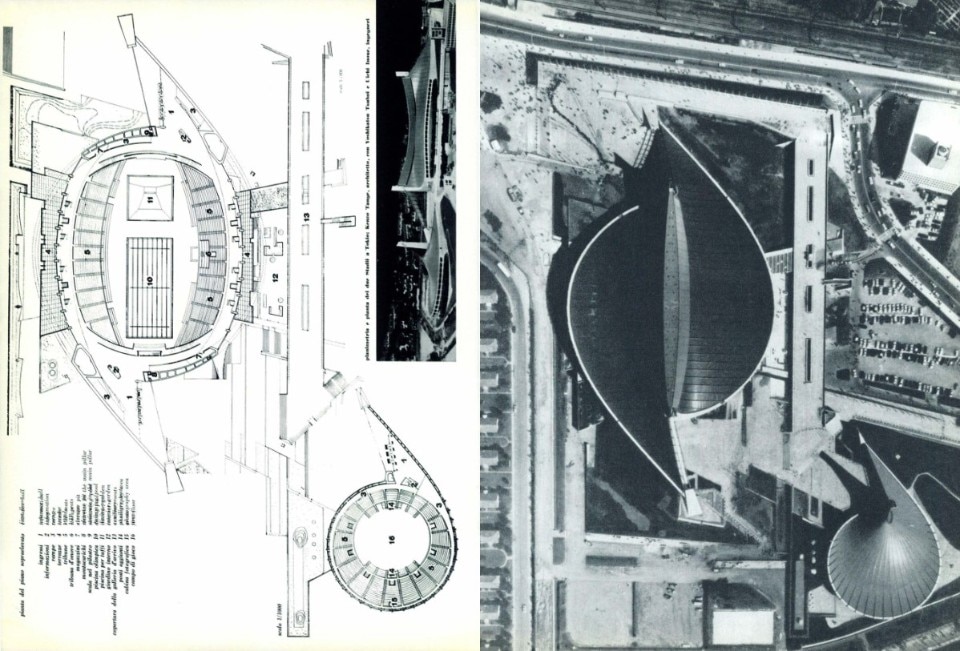
Steel is the most important technological element in current architecture. Its prerogative, tensile strength, develops in resistance to great tension. The rational use of this prerogative responds to the direction that is being taken in contemporary architecture. Dimensions—I thought—suggest structure: starting from the beam to the arch to the vault to the dome to the suspended structure, according to the distances to be connected, like bridges. Another consideration was added to these: in comparison to the 'convex' space of the dome, the 'concave' space of the suspended structure encloses a much smaller volume, and this also simplifies problems of heating, air conditioning, acoustics—all problems inherent in a huge interior space. But the biggest problem, with respect to the interior space, was guaranteeing that it not take on inhuman proportions when empty or filled with just a few people. No one wanted to fragment the space: we wanted to create and maintain a unified environment where athletes and spectators share growing mutual emotion. A single space—not closed and oppressive but free and open—a space in which the fifteen thousand spectators can also move and flow 'gently' in functional and psychological terms; and not only inside the stadium but from one stadium to another. The suspended structure allowed me to create an 'open form'—the 'single open space' that we desired. It also allowed us to create a visual and ideal relationship between the two stadiums. There is tension not only in the buildings' structure but also in the relationships between the two buildings facing on another with their two open 'mouths'.
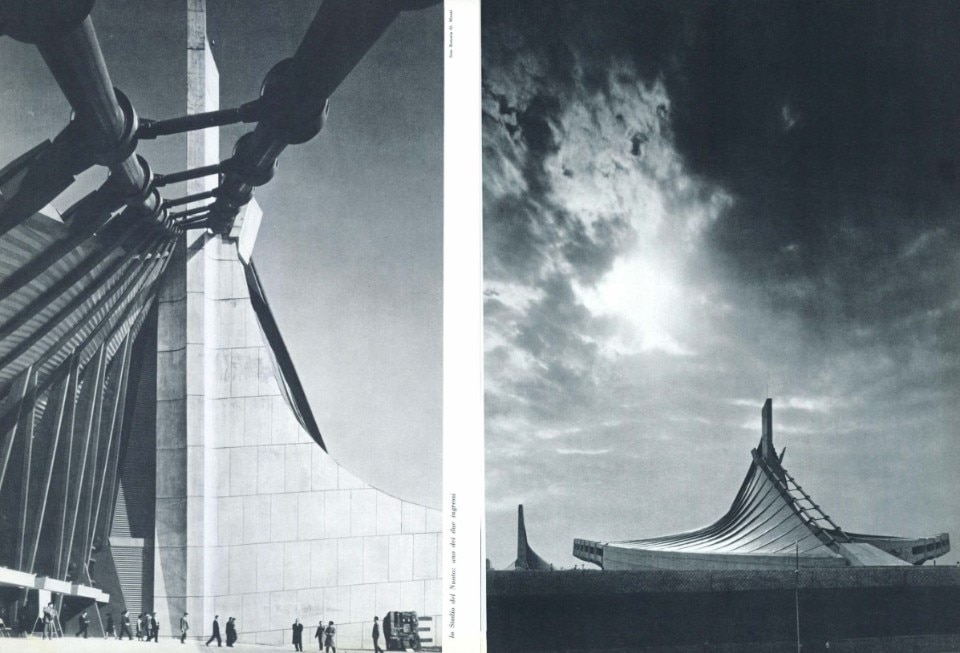
Once I entered the Swimming Stadium, I saw how the space changed dynamically depending on my movements, and it seemed to me that the movements of the people themselves give the space its dynamism.
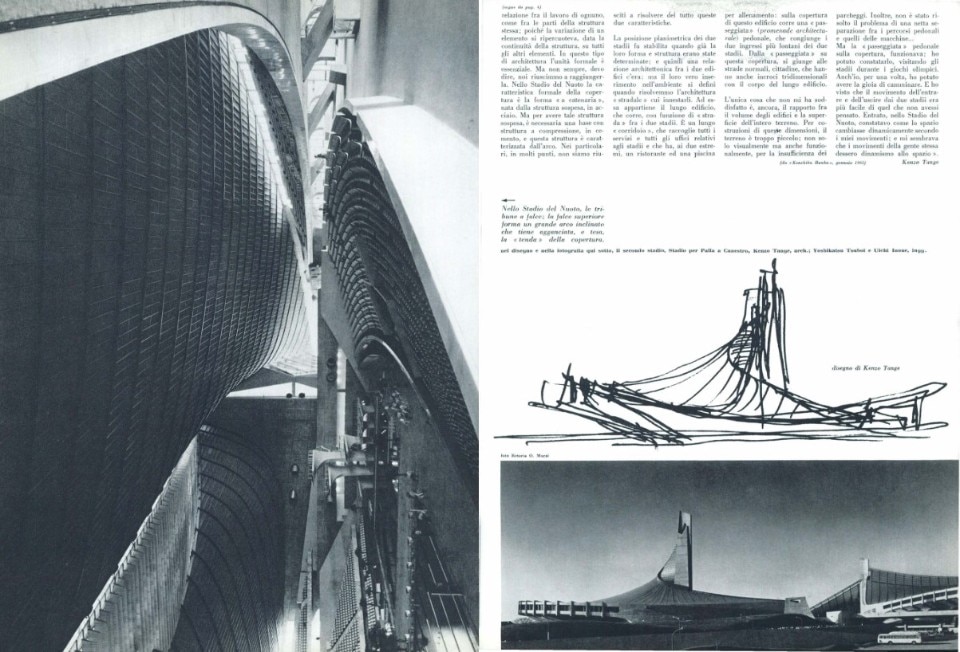
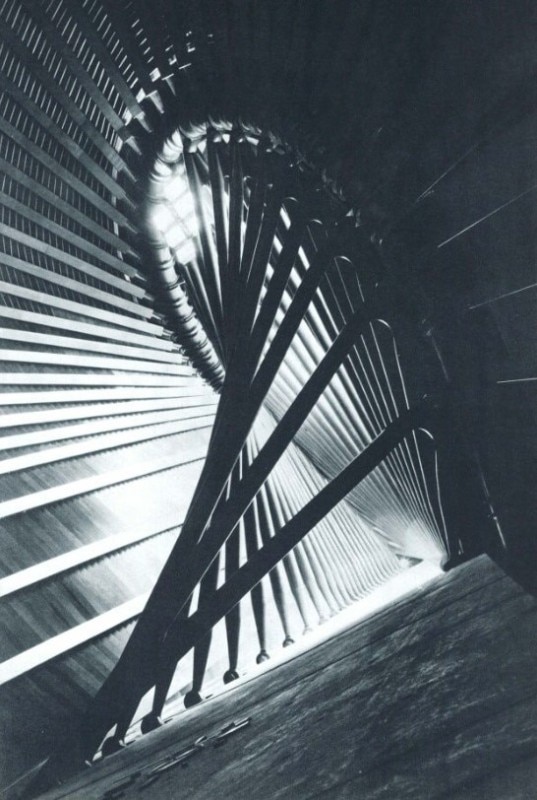
The only thing that did not please me is, again, the relationship between the volume of the buildings and the ground surface. For buildings of this size, the lot is too small, not only visually but also functionally, due to the inadequacy of parking areas. In addition, the problem of the separation between pedestrian and automobile circulation was not resolved...But the pedestrian 'walkway' on the roof worked. I saw this by visiting the stadiums during the Olympic Games. I, too, for once, had the joy of walking along it. And I saw that the movement of entry and exit from the two stadiums was easier than I thought. Once I entered the Swimming Stadium, I saw how the space changed dynamically depending on my movements, and it seemed to me that the movements of the people themselves give the space its dynamism."
(from Kenchiku Bunka, January 1965)
